1.e4 c5

This was a very significant moment, because it was the first time I played the Sicilian Defense in over 3 months. For a couple years, I’ve been playing a variation of the Modern Defense with d6 and c6. Although it leads to an interesting struggle, I was never able to generate the kind of dynamic and fascinating play that I have constantly found in the Sicilian.
This is a great game, and I have vowed to play the Sicilian against 1.e4 for the entire rest of my life
2.Nf3 Nc6 3.d4 cxd4 4.Nxd4 Qb6
I’ve played many different Sicilians including the Kan, Taimonov, Dragon, and Pelican. This way of playing the Sicilian has become my favorite, because it gives White many fewer options than a lot of other lines. Note that it’s Black who is already forcing play, and White has to make a decision on move 5. He also gets the chance to go wrong, as capturing on c6 strengthens Black’s center, and it’s the wrong thing to do in this position. But if you play this variation, you’ll find a lot of your opponent’s will make that capture. They just don’t like being forced to retreat to b3.
5.Nb3 Nf6 6.Bd3
Nc3 is a better move because it controls d5. Here’s a general principle in the Sicilian — if black can play …d5 under the right circumstances, than he is usually either equal, and sometimes better.
6...d5
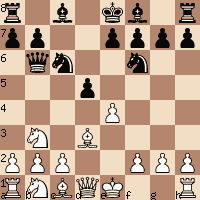
Look at the great freedom and activity Black already has! He didn’t have to spend time building a fortress, and gradually liberating his position, which is the natural course of events in many defensive systems. On the surface, it appears that White can win a pawn with 7.exd5 Nxd5, followed by 8.Bxh7 and queen takes knight. However, this is a tricky variation I’ve already worked out in advance, and you can see the details in the next subvariation.
7.exd5 Nxd5 8.Bxh7 Nf6 9.Bd3 Ng4
The knight keeps working its magic. First it knocked out White’s remaining center pawn. Now it arrives on g4 with a double attack on f2 and h2.
10.Qe2 Nxh2
Regaining the pawn, and threatening Nf3 check, winning the rook.
11.Rg1
And now Black can continue with either Bg4 or Ng4, and has a slight advantage in either case.
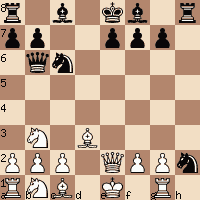
Question:
Which one do you like best?
Answer:
The computer likes Bg4 best. This is tempting, isn’t it? After all you get to develop another piece and attack White’s queen at the same time.
However, I like Ng4 better, and the reason is because over the years I’ve learned that it can be very dangerous to leave a piece out on the corner of the board. Sometimes it gets trapped, and in the meantime, it’s always out of play. Even if the computer thinks a move is better, what counts more is the fact that we’re human beings playing against other human beings. It’s best to make the move that gives you the greatest number of practical chances.
7...Qc7 8.Nc3 dxe4 9.Nxe4 Nd5
I’ve attacked the bishop on e3 with either Nd5 or Ng4 many times in this variation.
10.Bg5 h6 11.Bh4 g5
The pawn advance h6-g5 is a theme I imported from the Najdorf for this game. It’s the first time I’ve ever played this concept. In essence, Black gets a great deal of activity, at the cost of weakening his kingside. White wants to settle down the position, and then find a way to exploit Black’s kingside weaknesses.
12.Bg3 Nf4 13.0–0 Bg7 14.Re1
c3 was better.
14...Bxb2
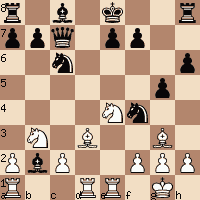
It’s always important to decide if it’s worth taking time to snatch a pawn like this before you’ve completed your development. At the same time, it’s good to remember that all pawns aren’t created equal. I especially liked capturing the b2 pawn because now it’s very difficult for White to play c3. And if he can’t play c3, then his d4 square is greatly weakened.
So that means when I captured on b2, it wasn’t just to win a pawn. It was also to increase my central control.
15.Rb1 Bg7 16.Nbc5 0–0 17.h4 b6 18.Na6 Bxa6 19.Bxa6 Rad8 20.Qg4
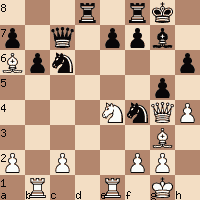
An unfortunate move that loses a piece. Blunders often happen in a fast time control. However, I was already winning in a complicated position. The best move was 20.Qh5, and here are the next several moves my computer likes after that.
20.Qh5 Ne5 21.Bxf4 gxf4 22.Qf5 f3 23.gxf3 Rd5 24.Be2 Rfd8 with a dominating position for Black.
20...f5 21.Bxf4 gxf4 22.Bc4+ Kh8 23.Qg6 fxe4 24.Qxe4 Ne5 25.Be6 Rd4 26.Qe2 f3 27.Qe3 fxg2 28.Rb3 Nf3+
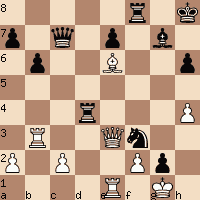
Resigns
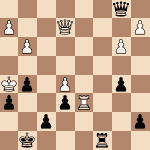
I find it difficult to play sicilian , after reading your article i find difficult to play, how i should practise sicilian , suggestion
Awesome!!!!!!! post us more please we’re getting enlightened
i really appreciate but i need puzzle on scillian defence
I really love your Sicilian move orders here indeed..
..I’ve been playing Sicilian for about a year..and it has been on the conventional way of defending & counter-playing,..which sometimes bears no chance of winning, but drawing at best..
Thanks for sharing!